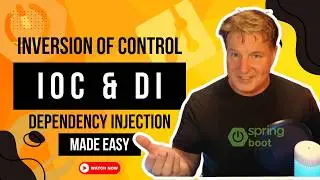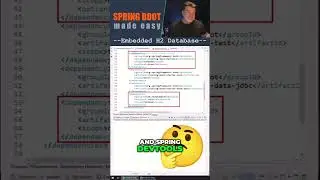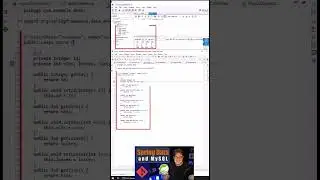Dependency Injection & Inversion of Control in Spring Tutorial
If you want to master Spring and Spring Boot, you have to be a master of Dependency Injection and Inversion of Control in Spring. In this Spring IoC & DI tutorial, we'll look at exactly what Inversion of Control is in Spring, and how Spring Dependency Injection works with the Spring IoC container.
This Spring tutorial looks only at the core Spring Framework, or more specificially, the Java classes associated with the spring-context starter. We don't even using Spring Boot, but instead just core Spring framework classes to access the ApplicationContext, user Autowired and Component annotations, and see how Inversion of Control and Dependency Injection works in Spring.
A full tutorial is over on TheServerSide.
The following is just some AI generated junk to capture keywords...
Inversion of Control (IoC) and Dependency Injection (DI) are core principles of the Spring Framework that help manage object creation and dependencies in a flexible and decoupled manner.
Inversion of Control (IoC) refers to a design pattern where the control of creating and managing objects is transferred from the application code to a container or framework, in this case, the Spring IoC container. Instead of objects creating their dependencies, the IoC container manages the lifecycle of objects and their dependencies. This inversion allows for more modular, testable, and maintainable code because it decouples the implementation details from the control flow.
Dependency Injection (DI) is a specific way to implement IoC, where an object’s dependencies are “injected” into it, rather than the object creating them itself. In Spring, DI can be achieved through constructor, setter, or field injection, depending on how the dependencies are supplied to the object. This approach allows objects to be loosely coupled and easily interchangeable, promoting a flexible architecture.
Benefits of IoC and DI in Spring:
Decoupling: By outsourcing the management of dependencies, classes are not tightly bound to their dependencies, making it easier to change or replace them without impacting other parts of the application.
Easier Testing: DI allows for easy substitution of dependencies with mock objects during testing, enabling effective unit testing.
Improved Code Reusability: Components can be reused in different contexts without modification since they do not manage their dependencies directly.
Configuration Flexibility: Dependencies and object configurations are managed externally, often through XML, Java annotations, or Java configuration classes, making it simple to adjust application behavior without altering code.
Better Maintainability: The decoupled nature of components leads to cleaner, more maintainable code, as dependencies can be managed and updated centrally.
IoC and DI in Spring promote a clean, modular architecture that enhances flexibility, testability, and maintainability, making them fundamental to modern Spring-based applications.
Watch video Dependency Injection & Inversion of Control in Spring Tutorial online, duration hours minute second in high quality that is uploaded to the channel Cameron McKenzie 04 September 2024. Share the link to the video on social media so that your subscribers and friends will also watch this video. This video clip has been viewed 2,271 times and liked it 98 visitors.














![What does public static void main (string args[]) mean? Java Inverview Question 33](https://images.reviewsvideo.ru/videos/CUlGw9cIwDI)
















